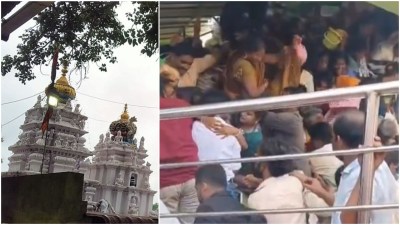Champaran reaps crime amidst sugarcane
BETTIAH, Aug 12: Like the sugarcane, which covers 30 per cent of the agricultural land in West Champaran, there's a reaping season for crim...

BETTIAH, Aug 12: Like the sugarcane, which covers 30 per cent of the agricultural land in West Champaran, there’s a reaping season for crime here.“By June, the sugarcane crop is about the height of a man and provides excellent camouflage for unscrupulous elements,” explains Brajesh Mehrotra, Bettiah’s district magistrate.
June to October is an open season for the mafia gangs, attracted not just by the screen provided by the standing cane crop but also the lure of the extra cash that local farmers tend to have with them from their last harvest.
Geography controls destinies here. West Champaran nudges Nepal on the East and Uttar Pradesh on the West. So it is literally a hop across the border for criminals on the run. The jungle and hilly terrain also help.
Motihari ASP Deepak Verma provides an interesting profile of these “cuppies” or upwardly mobile criminals. “The first thing they invest in once they’ve made some money, are guns. While the AK-47 is handy, they even go in for sophisticated models like the AK-92,” says Verma.
Everyone knows that the local police, with their lowly .303 rifles, are not a patch on these gangs in terms of arms.
Apart from guns, vehicles are also on the criminal’s wish-list. Starting from the 100-cc four-stroke Hero Honda, they could graduate in time to Omnis, Commanders, Gypsies and, ultimately, Sumos.
Going by Verma’s description, these seem to be criminals with attitude. Many of them are immaculately dressed, like the don Shilu Ansari, who sported “first-class safari suits” and lit up foreign cigarettes. Expensive shoes are also worn, partly to facilitate a spell of quick sprinting should the need arise.
“They have no immediate interest in investing in property because they are essentially a floating group,” observes Verma. But once a criminal turns into a white-collar one, he is ready to build himself one home or several.
Both Motihari, in East Champaran, and Bettiah are poor cities, with narrow, broken streets and extremely modest tenements. But there are several wedding cake-like mansions here that mock their squalid environs. Many of these belong to dons who now call themselves “decent” citizens.
Apart from these fat cats, their benefactors and beneficiaries, the rest of the people are on a sharply downward spiral. Says Dilip Varma, an MLA and founder of the Champaran Vikas Party: “There are thousands of schemes on paper but nothing that benefits people. For instance, under the Surishchit Rozgar Yojana, workers are to be paid Rs 39.40 in daily wages.
In reality, they get less than half of this. The rest is eaten up by politicians.” Any attempt at development is short-circuited. Electricity poles are in evidence everywhere, but villages in the region remain unlit.
Chandrabhushan Pandey, a social activist and journalist in Motihari, points out that crores of rupees were spent by the Bihar Marketing Board to construct market areas or bazaar samitis. Is there a way out of the morass for the people of East and West Champaran? Bettiah-based jeweller Sohan Raj Gupta replies with heavy sarcasm: “The people here are true followers of Gandhiji. Slap them hard on one cheek and they’ll turn the other.”
Attempts to change Champaran’s reality have remained scattered and, ultimately, futile. L M Surti, a former MLA from Sigauli, puts it this way: “People here trusted someone like Gandhi and rallied around him. Today, there is nobody they can trust.” In Champaran’s topsy-turvy world, saviours turn out to be scoundrels and scoundrels project themselves as saviours.



- 01
- 02
- 03
- 04
- 05




























